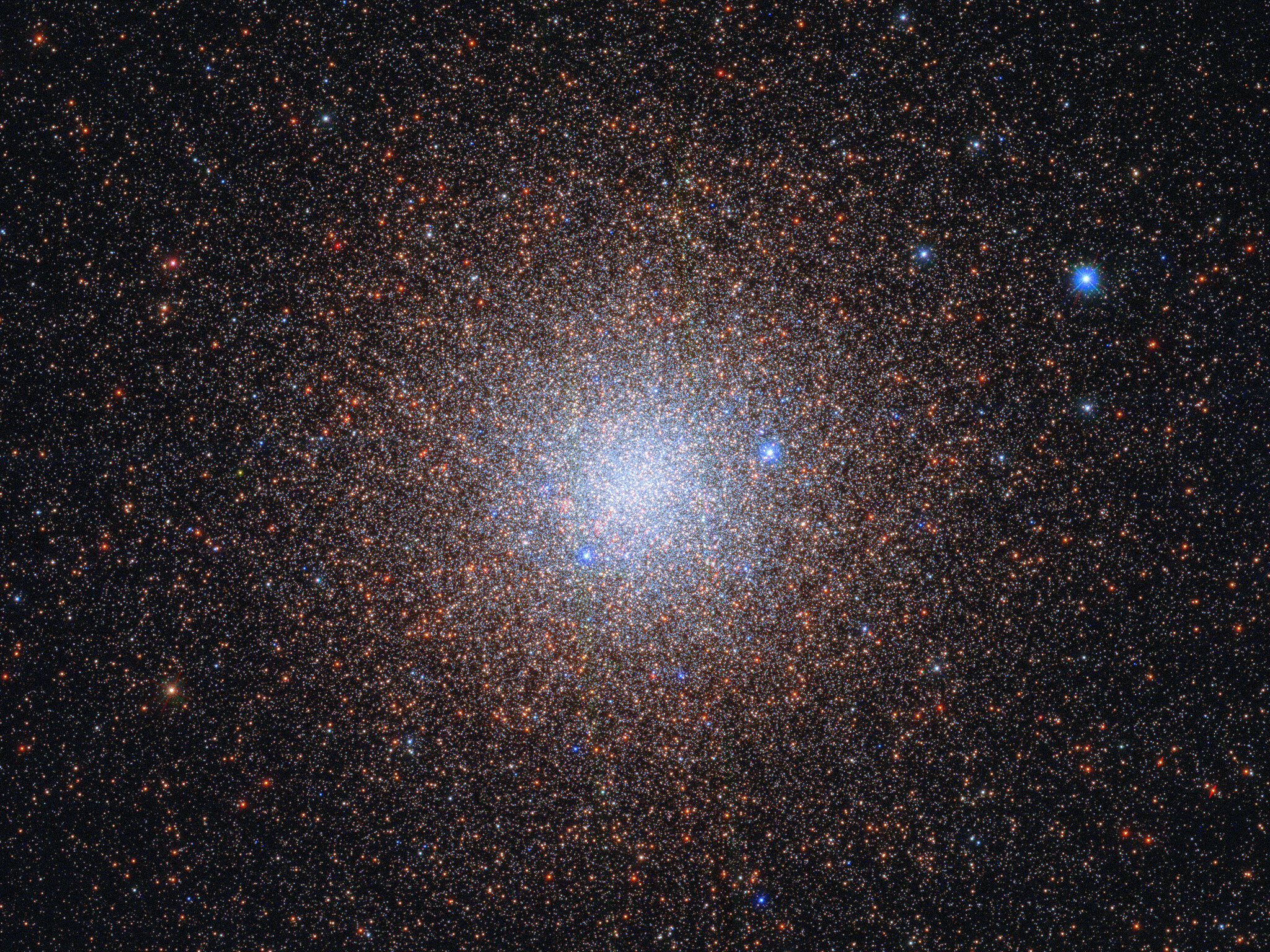哈勃望远镜拍摄到宇宙雪花
Almost like snowflakes, the stars of the globular cluster NGC 6441 sparkle peacefully in the night sky, about 13,000 light-years from the Milky Way’s galactic center. Like snowflakes, the exact number of stars in such a cluster is difficult to discern. It is estimated that together the stars have 1.6 million times the mass of the Sun, making NGC 6441 one of the most massive and luminous globular clusters in the Milky Way.
NGC 6441 is host to four pulsars that each complete a single rotation in a few milliseconds. Also hidden within this cluster is JaFu 2, a planetary nebula. Despite their name, planetary nebulas have little to do with planets. A phase in the evolution of intermediate-mass stars, planetary nebulas last for only a few tens of thousands of years, the blink of an eye on astronomical timescales.
There are about 150 known globular clusters in the Milky Way. Globular clusters contain some of the first stars to be produced in a galaxy, but the details of their origins and evolution still elude astronomers.
Text credit: ESA (European Space Agency)
Image credit: ESA/Hubble & NASA, G. Piotto
球状星团NGC 6441的恒星几乎像雪花一样,在离银河系银河系中心约13,000光年的夜空中和平地闪烁。像雪花一样,很难分辨出这样一个簇中恒星的确切数目。据估计,这两颗恒星的质量加起来是太阳的160万倍,使得NGC 6441成为银河系中质量最大、最明亮的球状星团之一。
NGC 6441拥有4颗脉冲星,每颗都在几毫秒内完成一次旋转。在这个星团中还隐藏着行星星云JaFu 2。行星状星云尽管有它的名字,但它们和行星没有什么关系。行星状星云是中质量恒星演化的一个阶段,只持续几万年,在天文时间尺度上不过是一眨眼的功夫。
银河系中大约有150个已知的球状星团。球状星团包含了银河系中最早产生的一些恒星,但天文学家仍然无法了解它们起源和演化的细节。
文字来源:ESA(欧洲航天局)
图片来源:ESA/Hubble & NASA, G. Piotto


is good